Renaissance Gallery
The Renaissance Gallery was designed in a thematic approach that highlights the achievements of the Renaissance under the rule of Sultan Qaboos bin Said - may he rest in peace - with reference to the future projects of the Oman Vision 2040, and the wise leadership of His Majesty Sultan Haitham bin Tarik. The visitor goes through an immersive interactive experience using latest museum display technologies.
This gallery consists of 12 pavilions: Renaissance Dawn, Building a Nation, Our Society, A Healthy Environment, Peace and Stability, Towards a Sustainable Economy, Infrastructure and Connectivity, Ash Shura, Oman and the World, Creative Expression, Media and Communication, and Inspiration.
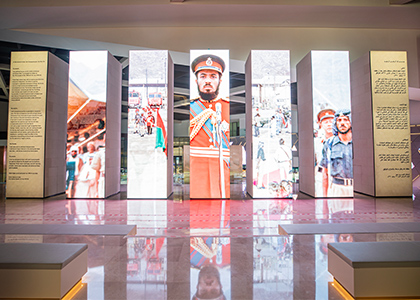
Renaissance Dawn
This is the entrance to the Renaissance Gallery; it features seven large screen pillars marking the ascension of Sultan Qaboos bin Said - may he rest in peace - to the throne and the key events during the first years of his rule.

Building a Nation
This pavilion focuses on the approach followed by Sultan Qaboos bin Said - may he rest in peace - in working to achieve his vision of building the Renaissance and consolidating its pillars in various fields, such as education, healthcare, media, economy, foreign relations and others. It also sheds light on Sultan Qaboos bin Said's meetings with his people, and the elements of the Renewed Renaissance under the leadership of His Majesty Sultan Haitham bin Tarik.
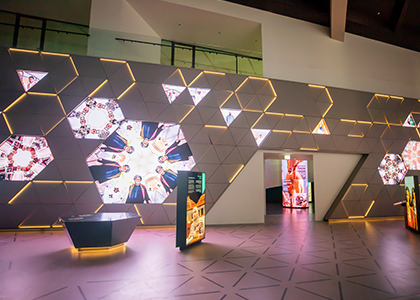
Our Society
This space charts the unprecedented developments of Oman’s social fabric, in areas of education and healthcare, while preserving core values of family and ensuring equality and justice for all. Its most striking feature is a large kaleidoscopic audio-visual wall that showcases the diversity of Oman’s society.
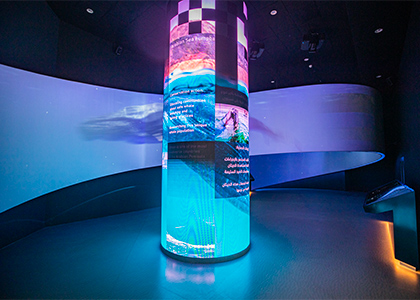
A Healthy Environment
This pavilion explores Oman’s environmental development. The Sultanate of Oman is recognised internationally for the quality of its natural environment and, in this space, immersive visual exhibits will enable visitors to discover how conservation of the flora and fauna has long been a priority in Oman.
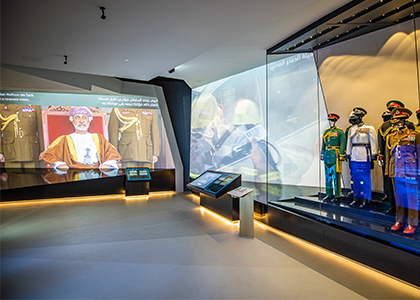
Peace and Stability
This pavillion explores Oman’s military and security forces, including the Ministry of Defence, Royal Oman Police, as well as the Public Authority for Civil Defence and Ambulance, focusing on their developments and achievements since 1970.
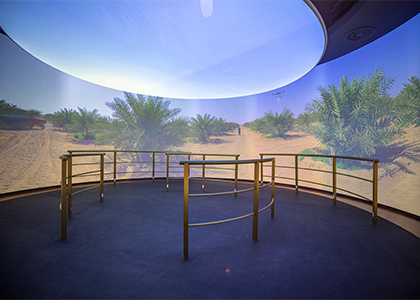
Towards a Sustainable Economy
This pavilion enables visitors to learn about Oman’s key natural resources, the continued efforts towards sustainable development and Oman’s continued investment in developing a skilled workforce. It also highlights Oman 2040 targets. The main feature is a 360 degrees’ theatre with a moving floor that takes visitors on an immersive journey through Oman’s wealth of resources and industries.
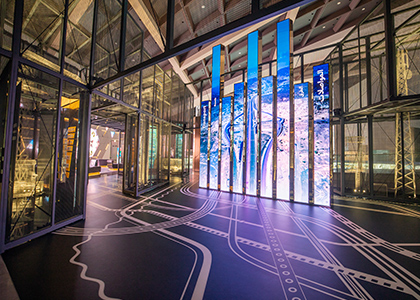
Infrastructure and Connectivity
This pavilion highlights the construction and technological effort behind the infrastructure projects across the Renaissance. Improved transport, public services and utilities have dramatically enhanced quality of life and enabled rapid economic progress throughout Oman.
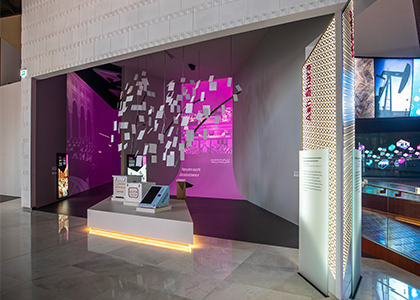
Ash Shura
The Ash Shura pavilion explores the emergence of a modern style of governance, administration and political participation in Oman since 1970. It introduces the various ways in which Oman is administered and demonstrates how these systems accord with the tradition and heritage of Omani society, particularly the principle of ash shura.
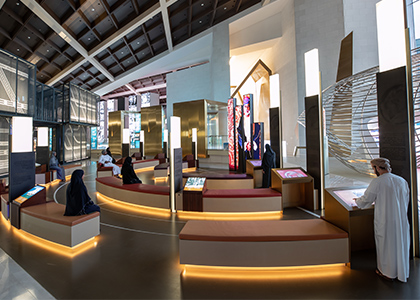
Oman and the World
The Oman and the World pavilion explores how Oman has orientated itself diplomatically since the Renaissance, establishing formal relations with the region and wider world. Oman’s foreign and domestic policies have mutually supported each other to build a secure and developed country.
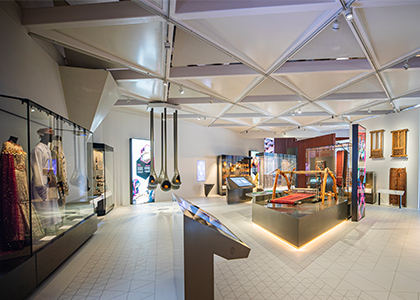
Creative Expression
This pavilion celebrates Omani creativity expressed through architecture, arts, crafts, music, calligraphy, poetry, music and dance. It is the largest pavilion in the Renaissance Gallery, consisting of two floors and offers visitors a panoramic view of the whole Renaissance Gallery.
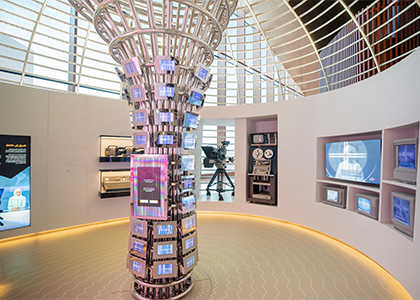
Media and Communication
This pavilion explores the development of Oman’s media from its inception and how it helped create a sense of identity and nationhood. Visitors will explore the firsts of Oman’s radio, print and television, but also how Oman has launched itself into the information age as society embraces new technologies and forums of expression.
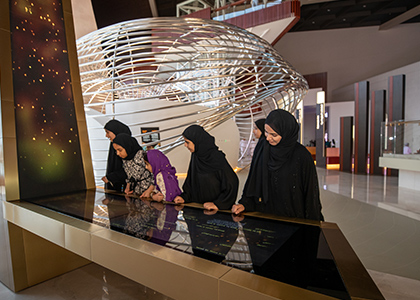
Inspiration
This pavilion reminds visitors - as they leave the exhibition space - of the Omani people who have played a fundamental role in the transformation of their country throughout the Renaissance, inspiring further developments while building on existing achievements.